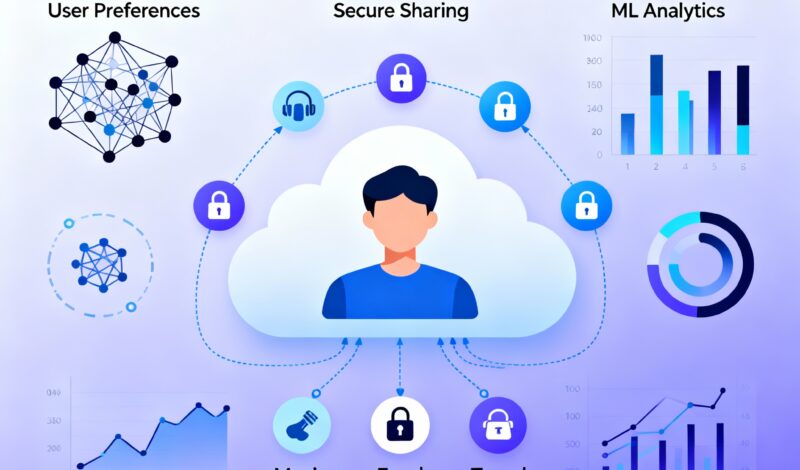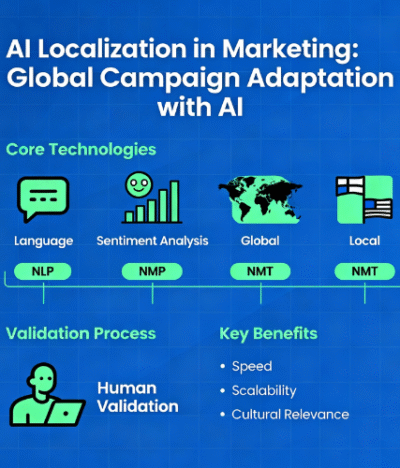The New Era of Marketing: AI and Zero-Party Data Revolution
Imagine this: a user visits your brand’s website and voluntarily shares their preferences — favorite colors, purchase goals, or product styles — not because they have to, but because they want to. This simple act represents the future of marketing powered by AI and zero-party data — where technology meets transparency and trust.
That’s zero-party data in action. It’s the cleanest, most transparent form of customer insight — data that users intentionally share. Unlike cookies or third-party trackers, it’s built on trust, not surveillance.
Now add artificial intelligence to this equation — and you have the perfect balance of privacy, personalization, and performance, driven by ethical, data-powered intelligence.
What Exactly Is Zero-Party Data?
Zero-party data is information that customers willingly provide to a brand. Examples include:
- Survey answers or quizzes (“Find your perfect skincare match”)
- Preference centers (“I want updates only about sneakers”)
- Interactive experiences or loyalty programs
Unlike first-party data (behavior-based) or third-party data (collected externally), zero-party data gives marketers explicit consent and clear intent.
Insight: According to Forrester, brands using zero-party data see up to 40% higher engagement because the personalization feels helpful, not intrusive.
How AI Turns Zero-Party Data into Action
Collecting zero-party data is only the start. AI makes it powerful. Here’s how:
- Pattern Recognition: AI identifies what customers want — even from small datasets — revealing shared interests across audiences.
- Predictive Recommendations: Machine learning models use zero-party insights to predict future behavior — such as timing, frequency, and preferred content type.
- Dynamic Personalization: AI tools automatically tailor email campaigns, ad creatives, or landing pages in real time based on stated user preferences.
- Privacy Preservation: With federated learning and secure computation, AI can analyze behavior without ever exposing private information.
Why This Matters in the Privacy Era
In a post-cookie world, marketers can’t rely on passive tracking anymore. Regulations like GDPR, CCPA, and Apple’s App Tracking Transparency have forced brands to rethink their data strategy.
Consumers are more privacy-conscious than ever — but they still expect personalized experiences. AI-driven zero-party data bridges that gap, giving brands a compliant way to build relevance and trust simultaneously.
Real-World Example: Sephora’s Interactive Quiz Model
Sephora uses an interactive “Beauty Profile Quiz” that asks customers about their skin tone, goals, and product preferences. This zero-party data feeds into an AI system that recommends personalized products and content.
The results?
- 2x higher engagement on personalized recommendations
- 40% increase in repeat purchases
- Improved customer trust and loyalty metrics
Sephora’s approach shows that personalization doesn’t need to invade privacy — it can invite participation.
Pro Tip: Use AI-powered preference centers on your website. Let users customize what kind of content or offers they receive. It increases retention and reduces unsubscribes.
Tools That Help You Do It
If you’re ready to implement AI zero-party data strategies, start with:
- Optimizely + AI Insights — combines survey data with predictive behavior analytics.
- HubSpot Smart Content — personalizes site experiences using stated user preferences.
- Segment CDP — unifies consent-based customer profiles powered by AI segmentation.
- OneTrust Preference Manager — automates data collection while staying compliant.
These platforms help marketers balance compliance with performance — a crucial mix in today’s environment.
Common Mistakes to Avoid
Even with good intentions, brands often make three big missteps:
- Collecting too much data — Keep forms short and focused.
- Failing to deliver value — Always give something in return (discount, guide, personalized tips).
- Lack of follow-through — Don’t collect preferences you never act on.
Remember: zero-party data is a privilege, not a right. Customers share it because they trust you. Don’t break that trust.
The Takeaway
The future of marketing isn’t about collecting more data — it’s about collecting the right data.
By combining AI and zero-party data, brands can create deeply personalized, privacy-compliant experiences that drive loyalty, not just clicks.
This is the evolution of performance marketing: ethical, transparent, and powered by intelligence — not intrusion.




